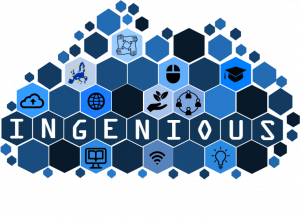What does the term “digital literacy” mean to you?
Ask a few educator colleagues what digital literacy means to them. You’ll likely hear a myriad of answers that differ from your own.
Although the meaning of digital literacy can vary greatly by source, even to the point of confusion, digital literacy encompasses 21st-century skills related to the effective and appropriate use of technology.
To keep things simple, let’s narrow the field to one definition. The American Library Association (ALA) defines digital literacy as “the ability to use information and communication technologies to find, evaluate, create, and communicate information, requiring both cognitive and technical skills.”
With this ALA digital literacy definition as a guiding light, it’s important to understand that even digital natives who know how to send a text and post to social media are not considered “digitally literate” by any means.
Digital literacy in education encompasses so much more. For example, students must have specific skills when reading online text that may contain embedded resources such as hyperlinks, audio clips, graphs, or charts that require students to make choices.
Students today are also being asked to create, collaborate, and share digital content and to do so responsibly. For these reasons, principals, school librarians, and teachers understand the importance of digital literacy skills for students and teaching digital literacy in the classroom.
Why reading online is not “digital literacy”?
Students who use both cognitive and technical skills to find, evaluate, create, and communicate information are certainly on their way to becoming digitally literate, savvy consumers of digital content.
However, it’s important to note that simply reading online or subscribing to an eBook service does not a digitally literate student make.
Yes, students can gain reading growth from online reading because reading practice—time spent reading—is key to achievement for students at every level. However, reading a book online, in most cases, is not much different than reading a print book. It simply replaces words on a page with text on a screen. It may only require that students know how to turn pages online. Essential digital literacy skills, as you can imagine, go so much further.
Why is digital literacy so important?
School leaders, media specialists, and educators are focusing more and more on the benefits of digital literacy skills in schools because today’s students are looking to the Internet as a key source of information. Students who are digitally literate know how to find and consume digital content. They know how to create, communicate, and share digital content.
Students who are building digital literacy skills understand the basics of Internet safety such as creating strong passwords, understanding and using privacy settings, and knowing what to share or not on social media. They understand the perils of cyberbullying and seek to stop current bullies and prevent others from cyberbullying.
In today’s digital world, nearly every career requires digital communication at some point, so equipping students with the skills to effectively and responsibly find, evaluate, communicate, and share online content is key to their futures. But the benefits of teaching your students digital literacy skills begin in the classroom right now.
Source: https://www.renaissance.com/





